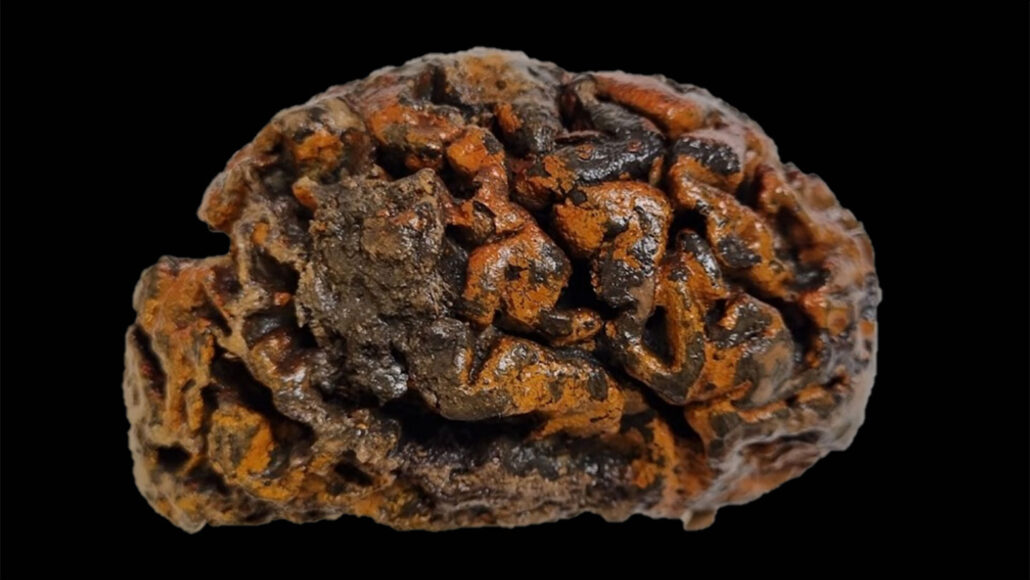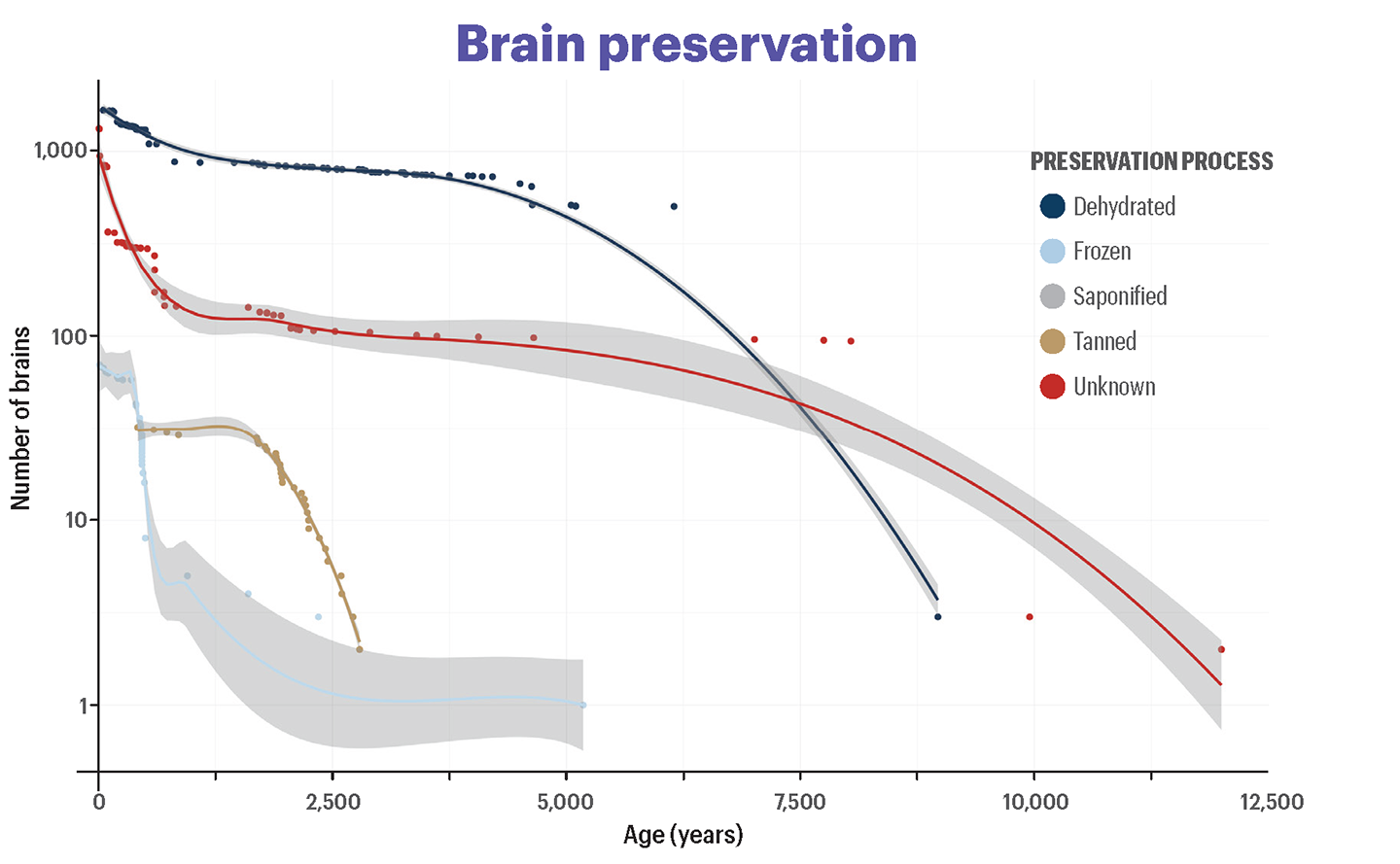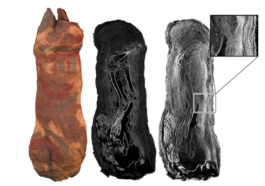Analyze This: Human brains can last thousands of years
Preserved remnants of human brains may not be so rare after all

Naturally preserved brains can take on a variety of textures and colors, depending on their surroundings. This 1,000-year-old brain of an individual excavated from a 10th century Belgian churchyard is still soft and wet and stained orange with iron oxides.
Alexandra L. Morton-Hayward
Archaeologists, take note. There may be brains hiding inside excavated human skulls. New data show that human brains can resist decay for at least 12,000 years.
When scientists find ancient preserved brains, they often call their finds unique or one-of-a-kind, says Alexandra Morton-Hayward. A forensic anthropologist, she studies human remains to tell stories of the dead. She works at the University of Oxford in England. But as she came across report after report on preserved brains, Morton-Hayward started to wonder how rare such finds could be.
So she and her colleagues scoured four centuries of archaeology research for mentions of naturally preserved brains. They found reference to more than 4,400 brains. They came from hundreds of dig sites.
The researchers sorted these brains into five different types based on the processes that had kept them from rotting away. Some had been frozen or dried. Others had been tanned, thus preserving the organ through the same process used to treat leather. (This can happen when the remains react with chemicals found in bogs.) Still other brains had been saponified.
That last natural process turns some of their fats into a fairly stable soapy substance known as grave wax. “It’s really disgusting,” Morton-Hayward says. “It smells absolutely terrible.”
Nearly one-third of the brains didn’t fall into any of these four types. In each of these cases, all that remained of the body’s once soft, squishy tissues was a preserved brain. The team reasoned that some unknown mechanism had saved its tissue from degrading. The researchers also collected past and present climate information to learn about the conditions linked to each type of brain preservation.
Brains preserved by the unknown process tended to persist for far longer than the other types of brains. The oldest one was 12,000 years old. Most of these specimens came from wet environments — sunken shipwrecks, the bottom of wells, lake beds and so on.
The research was published March 20 in the Proceedings of the Royal Society B.
Based on studies of soft tissues from dinosaurs and other ancient creatures, the team came up with a hypothesis for how the unexplored mechanism protects brains. Morton-Hayward now suspects that features of the brain’s chemistry and how it worked during life preserve it after death. The types of proteins and lipids in the brain may be especially prone to linking up in a way that makes big, stable molecules.
With the mystery preservation process at play, long-lasting brains may be more common than researchers realized. “I’d just love if other archaeologists were as excited as I was to go out to my next dig and gently rattle every skull,” Morton-Hayward says.
This graph shows the number of preserved brains of each type with different ages. The x-axis shows brains’ ages in years, increasing from left to right. The y-axis shows the number of brains found preserved up to each age. This number includes all brains that are the age marked on the x-axis or older. (For instance, look at the data point for “unknown” brains at an x-axis value of about 7,000. It has a y-axis value of about 100. That means there are about 100 “unknown” brains that are 7,000 or more years old.)

The farther archaeologists look back in time, the fewer preserved brains they generally find. So the number of brains of each type decreases as the age on the x-axis increases. The shape of the curve (the line that moves through the points) shows how the number of brains found for each type drops off with increasing age. There weren’t enough locations with saponified brains to draw trends about their changes with age.
Data Dive:
- Which type of preservation accounts for the most brains?
- Which process or processes preserve brains for the shortest time?
- How does the number of brains in the “unknown” category change over time?
- How does the change in the number of “unknown” brains across time compare with that of frozen brains? How does it compare with tanned brains?
- Where do you think frozen brains were found? What about dehydrated brains?
- What is another way that this data could have been presented?







